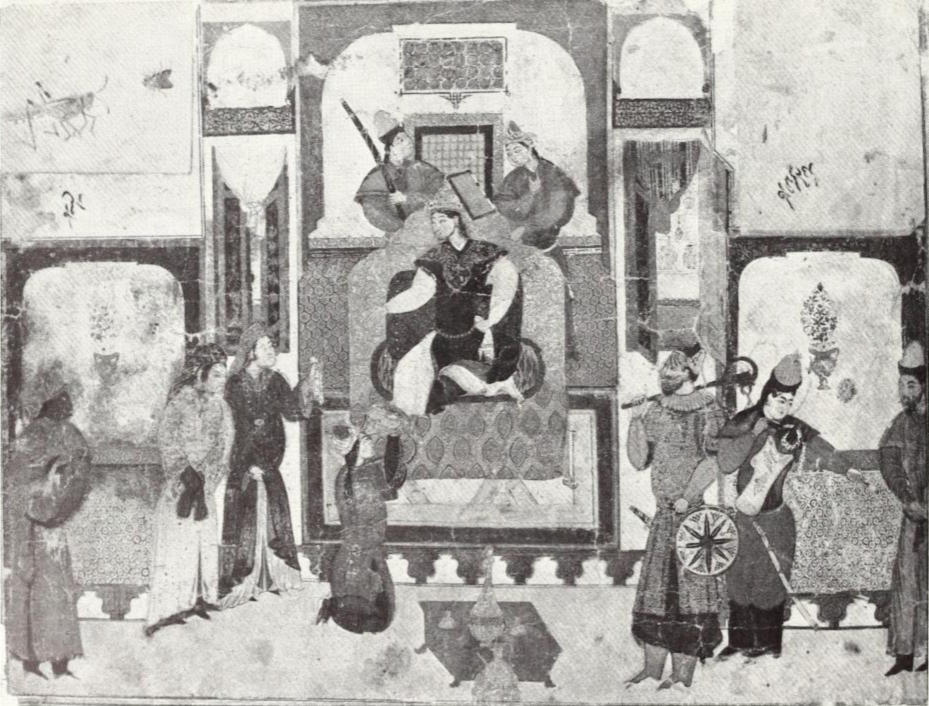Try Amazon Audible Plus

Find the perfect fit with Amazon Prime. Try Before You Buy.
Rustam Acts as Go-between in the Marriage of Farīburz with Firangīs
Illustration of Jalayrids from a late 14th Century Shahnama
The figures wear contemporary dress or dress of no latter than the date of the illustration.

From the Sarai Albums, Tabriz, 1370AD. Hazine 2160, folio 76a Topkapi Sarai Museum.
Rustam Acts as Go-between in the Marriage of Farīburz with Firangīs, Kay Khusraw’s Mother (fig. 28).
Kay Khusraw’s uncle, Farīburz, asks Rustam to act as go-between so that he can marry Firangīs, the widow of his brother,
Siyawush. Rustam explains the situation to Kay Khusraw, who says he will not object to the wedding if Firangīs is willing.
Firangīs is approached, and she accepts for her son’s and Rustam’s sake. So Firangīs and Farīburz are married.
On the beige, unpainted floor the elaborately decorated throne has been placed, and on it sits Kay Khusraw in violet and white clothes.
The wall behind the throne is covered with turquoise and dark blue hexagonal tiles.
Two figures, with a sword and a fan, stand behind the throne.
On both sides are doors (or cupboards) with curtains held up with knots.
In the foreground to the left is Firangīs in white and dark red clothes, her hands covered and looking down.
With her is a woman in dark clothes.
Kay Khusraw is addressing his mother, with his hands extended towards her.
On the right stands Rustam with his mace on his shoulder and his shield hanging from his belt. Behind him are two male figures.
The unpainted state of the floor and the two upper corners indicate that the miniature is not complete.
It portrays the moment Kay Khusraw tells his mother about the marriage.
Firangīs’s and Rustam’s expressions give meaning to the scene.
It looks as if Rustam were waiting for his turn to speak.
The attendants around Kay Khusraw are indications of his power.
Source: "Four Istanbul Albums and Some Fragments from Fourteenth-Century Shah-Namehs" by Nurhan Atasoy, pp. 19-48 in Ars orientalis; the arts of Islam and the East Vol. 8 (1970)
Referenced by figures 175 & 180 in: M. GORELIK, "Oriental Armour of the Near and Middle East from the Eighth to the Fifteenth Centuries as Shown in Works of Art", in: Islamic Arms and Armour, ed. ROBERT ELGOOD, London 1979
Back to Illustrations of Jalayrid Mongols


